„Eine Bärenfamilie, die Mutter und ihre beiden Jungen, musste vor einem Waldbrand an der Westküste des Sees fliehen. Sie konnten sich in den See retten. Die Bären schwammen viele Stunden, aber die Jungen wurden müde und bleiben hinter ihrer Mutter zurück. Mutter Bär erreichte die Dünen auf der Ostseite des Sees und bestieg dann die höchste Düne, um Ausschau nach ihren Jungen zu halten. Von hier aus schaute sie tagein, tagaus auf das Wasser in Erwartung ihrer Jungen. Zu müde, um weiter zu schwimmen, ertranken die beiden Jungen in Sichtweite der Küste. Der Große Geist Manitou erschuf zwei Inseln, um die Stelle zu markieren, wo die Jungen ertranken und schuf dann noch eine einzelne Düne, an der Stelle, wo die getreue Mutter wartete – South und North Manitou Island und Sleeping Bear Dune.“, so erklärt eine Legende der Anishinaabek die Entstehung der Dünen am nordöstlichen Ufer des Lake Michigan.
Geologisch ist die Erklärung der Dünen nüchterner: Während der Eiszeiten war das Gelände mit Gletschern bedeckt, die die Becken der Großen Seen herausarbeiteten. Außerdem lagerten die Gletscher enorme Mengen von Sand und Geröll ab, sog. Moränen. Als die Gletscher schmolzen, hinterließen sie das hügelige Gelände, das heute zu sehen ist. Die Becken füllten sich mit Wasser und der Wind konnte das abgelagerte Material leicht wegwehen und an anderer Stelle wieder ablagern. (besucht 2011)
English Summary
About a mother bear and her cubs
„A family of bears, the mother and her two cubs, had to flee from a forest fire on the west coast of the lake. They managed to escape into the lake. The bears swam for many hours, but the cubs grew tired and lagged behind their mother. Mother bear reached the dunes on the east side of the lake and then climbed the highest dune to look out for her cubs. From here she looked out over the water day in, day out, in anticipation of her cubs. Too tired to swim on, the cubs drowned in sight of the shore. The Great Spirit Manitou created two islands to mark the spot where the cubs drowned and then created a single dune at the spot where the faithful mother was waiting – South and North Manitou Island and Sleeping Bear Dune,“ is how an Anishinaabek legend explains the formation of the dunes on the northeast shore of Lake Michigan.
Geologically, the explanation of the dunes is more sober: during the ice ages, the terrain was covered with glaciers which carved out the basins of the Great Lakes. The glaciers also deposited enormous quantities of sand and scree, the so called moraines. When the glaciers melted, they left behind the hilly terrain that can be seen today. The basins filled with water to become the Great Lakes and the wind could easily blow the deposited material away and deposit it elsewhere. (visited 2011)
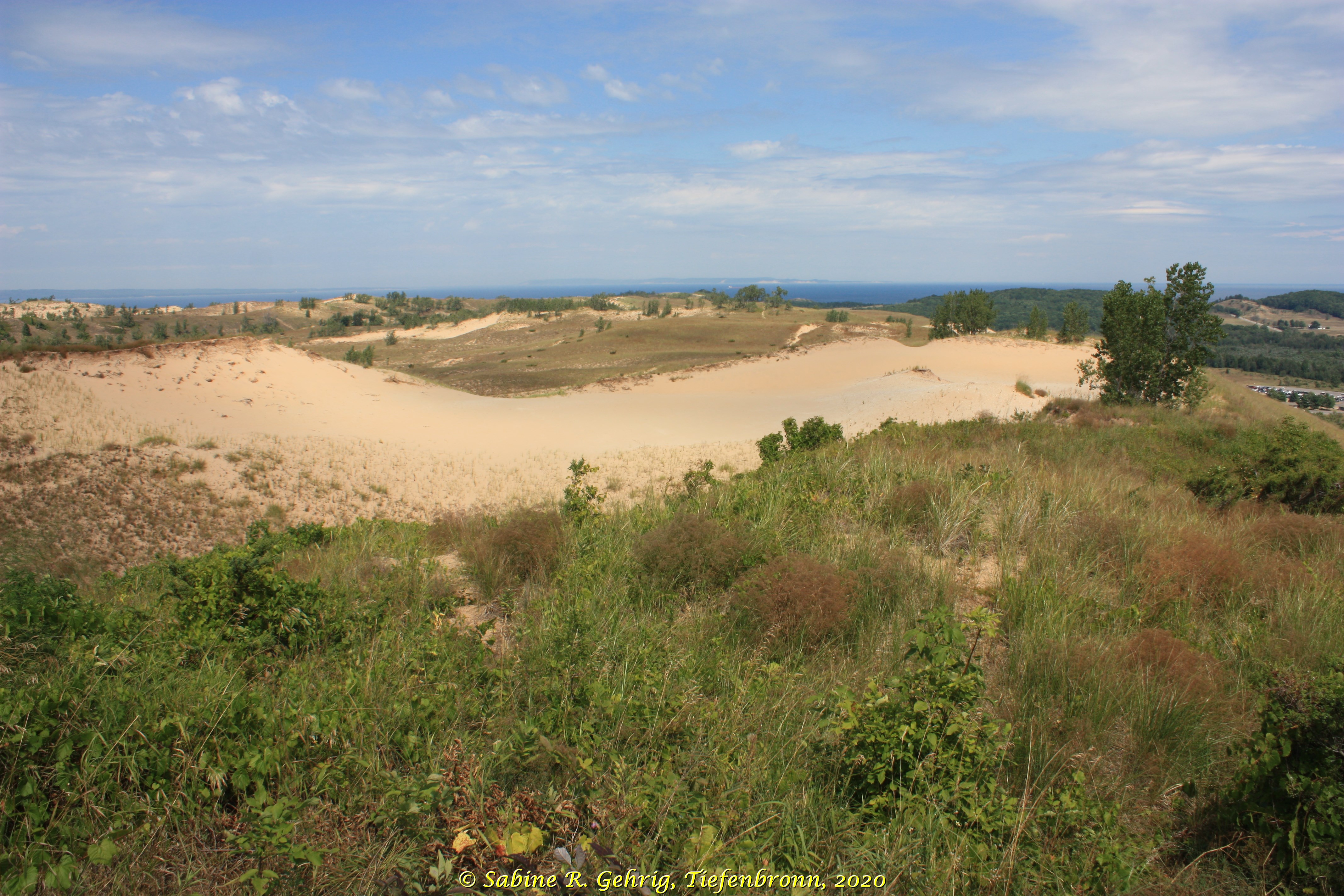
Sleeping Bear Dunes National Lakeshore, Michigan, USA (2011) – Blick über die Dünen, die auf den eiszeitlichen Moränen liegen. Die Dünen entstehen durch konstante Westwinde, die feines Material aus der ‚aufgeschnittenen Moräne’herauslösen und oben drauf wieder ablagern. / View over the dunes, which lie on the ice age moraines. The dunes are created by constant westerly winds, which remove fine material from the ‚cut moraine‘ and deposit it on top.
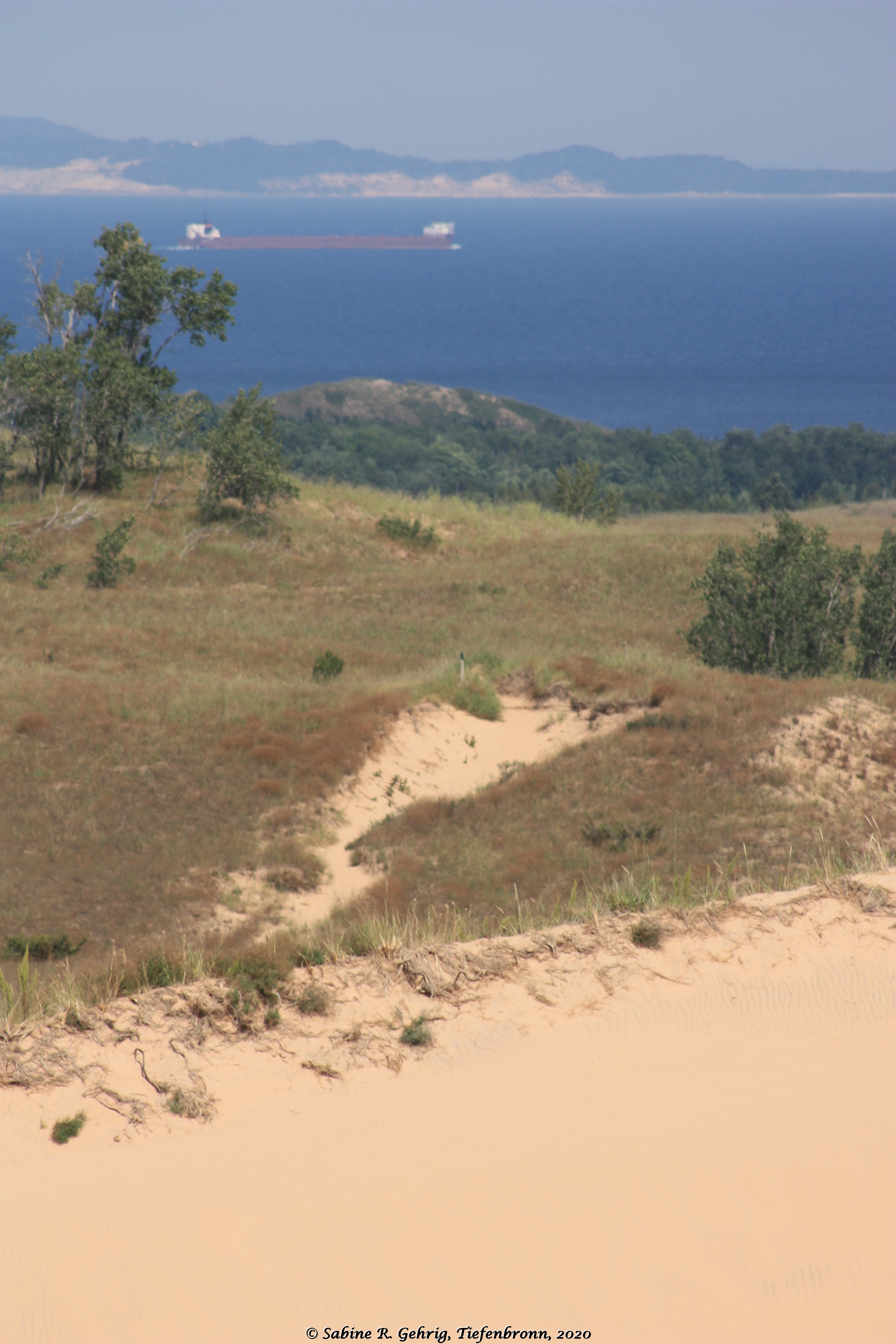
Sleeping Bear Dunes National Lakeshore, Michigan, USA (2011) – Blick auf South Manitou Island, davor ein Schiff auf dem Weg vom Lake Michigan in den Lake Huron / View of South Manitou Island, in front of it a ship on its way from Lake Michigan to Lake Huron
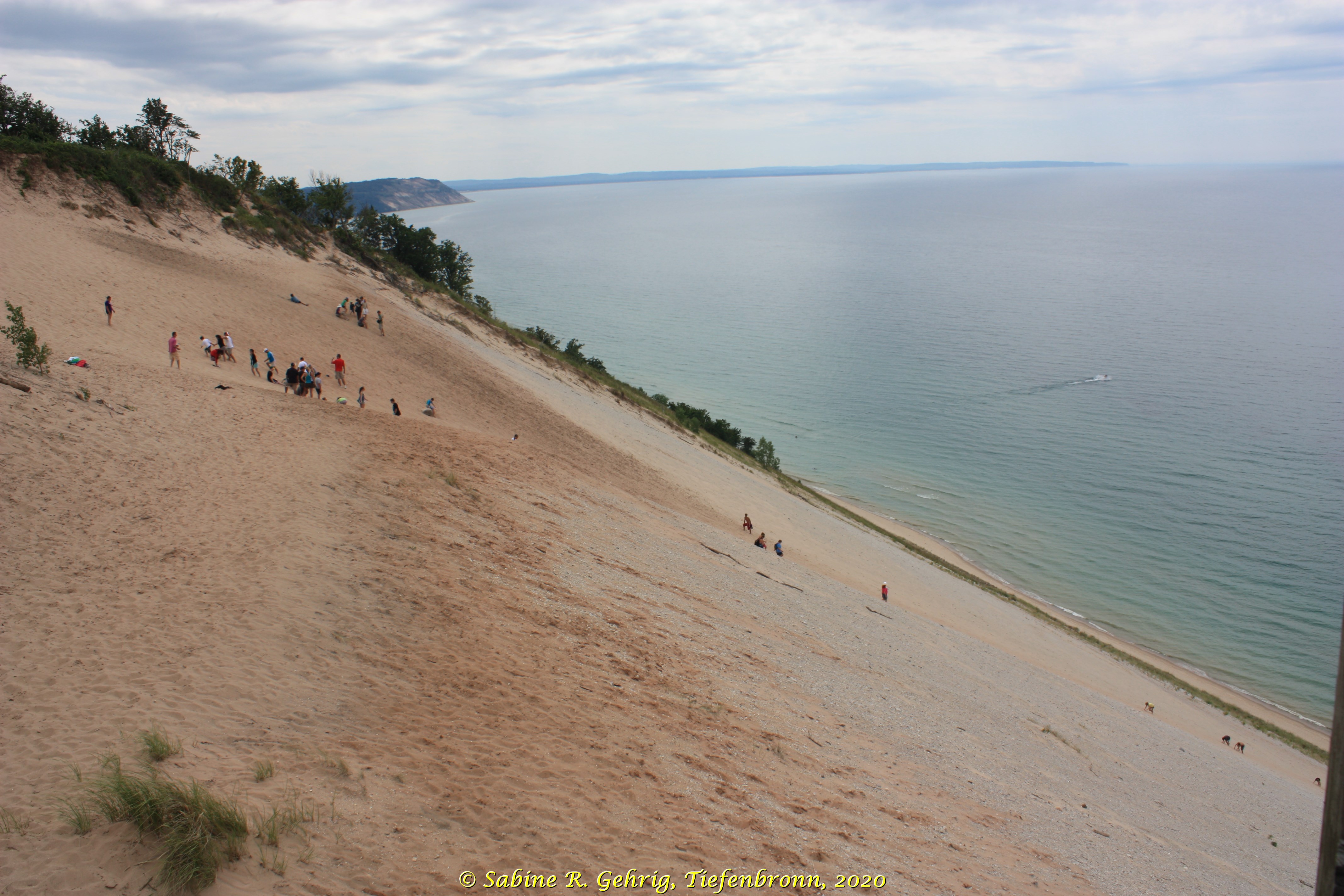
Sleeping Bear Dunes National Lakeshore, Michigan, USA (2011) – Blick Richtung Süden vom Lake Michigan Overlook und entlang der 137 m tief abfallenden Küste; das Steilufer weicht ca. 33 cm pro Jahr zurück, weil die Wellen an seinem Fuß nagen und Uferbereiche dadurch in den See brechen. / Panoramic view from Lake Michigan Overlook to the south and along the 450 ft deep sloping coast; the steep shore recedes about 1 ft per year because the waves gnaw at its foot and thus break shore areas into the lake.
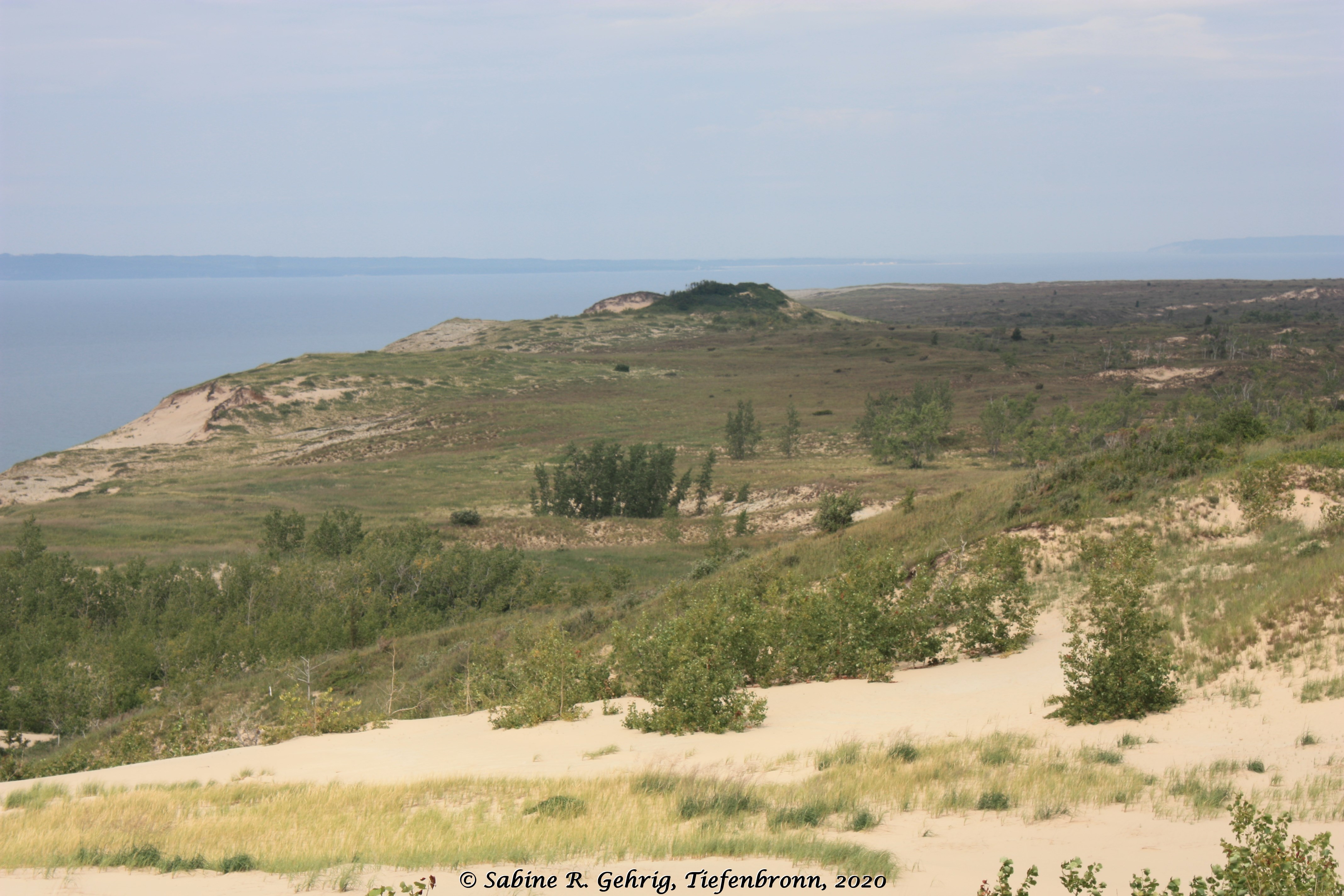
Sleeping Bear Dunes National Lakeshore, Michigan, USA (2011) – Sleeping Bear Dune, die kleine bewaldete Erhebung in der Mitte des Bildes, links am Horizont ist South Manitou Island und rechts die Südspitze von North Manitou Island zu erkennen / Sleeping Bear Dune, the small wooded hill in the middle of the picture, left at the horizon is South Manitou Island and to the right the southern tip of North Manitou Island
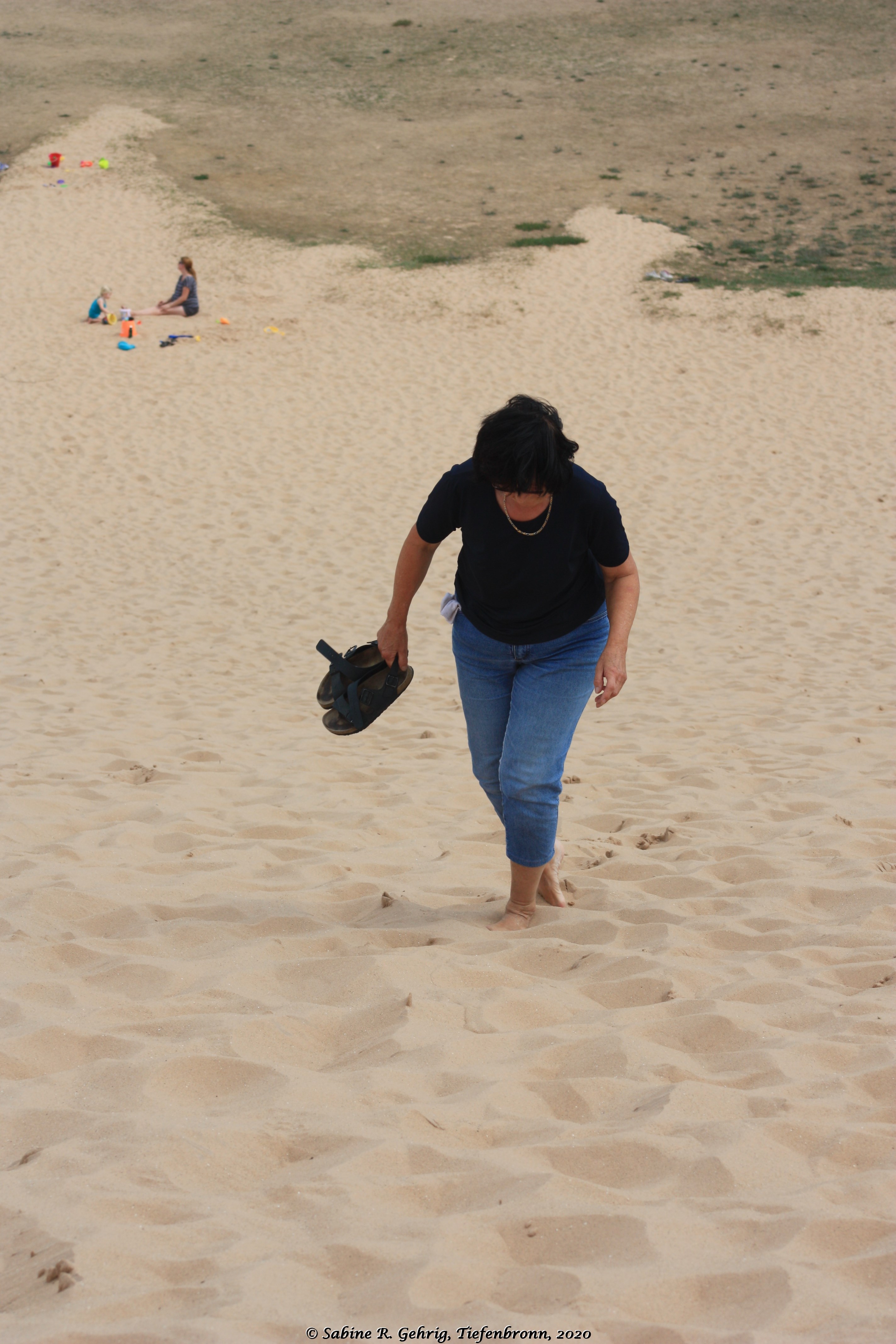
Sleeping Bear Dunes National Lakeshore, Michigan, USA (2011) – die Dünen, die wir hier am Dune Climbe erklimmen dürfen, liegen 2,4 km von der Küste entfernt, ein anstrengendes Unterfangen wie meine Mutter und ich bald feststellen mussten. / the dunes we are allowed to climb here at the Dune Climb are 1.5 mi from the coast, a strenuous undertaking as my mother and I soon discovered
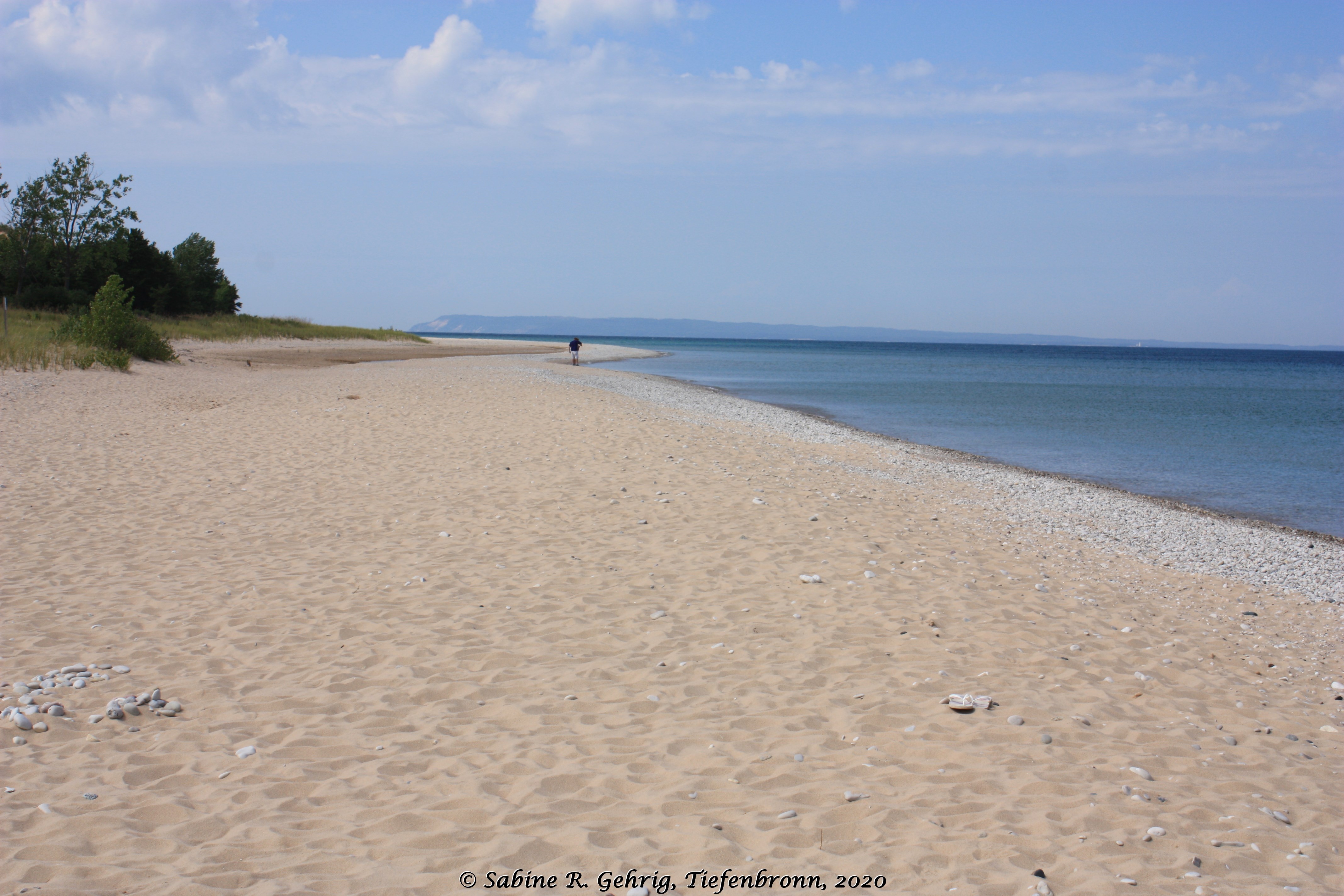
Sleeping Bear Dunes National Lakeshore, Michigan, USA (2011) – Blick am Strand von Glen Haven entlang auf South Manitou Island, die ca. 11 km vom Festland entfernt liegt / View along the Glen Haven beach to South Manitou Island, which is about 7 mi away from the mainland
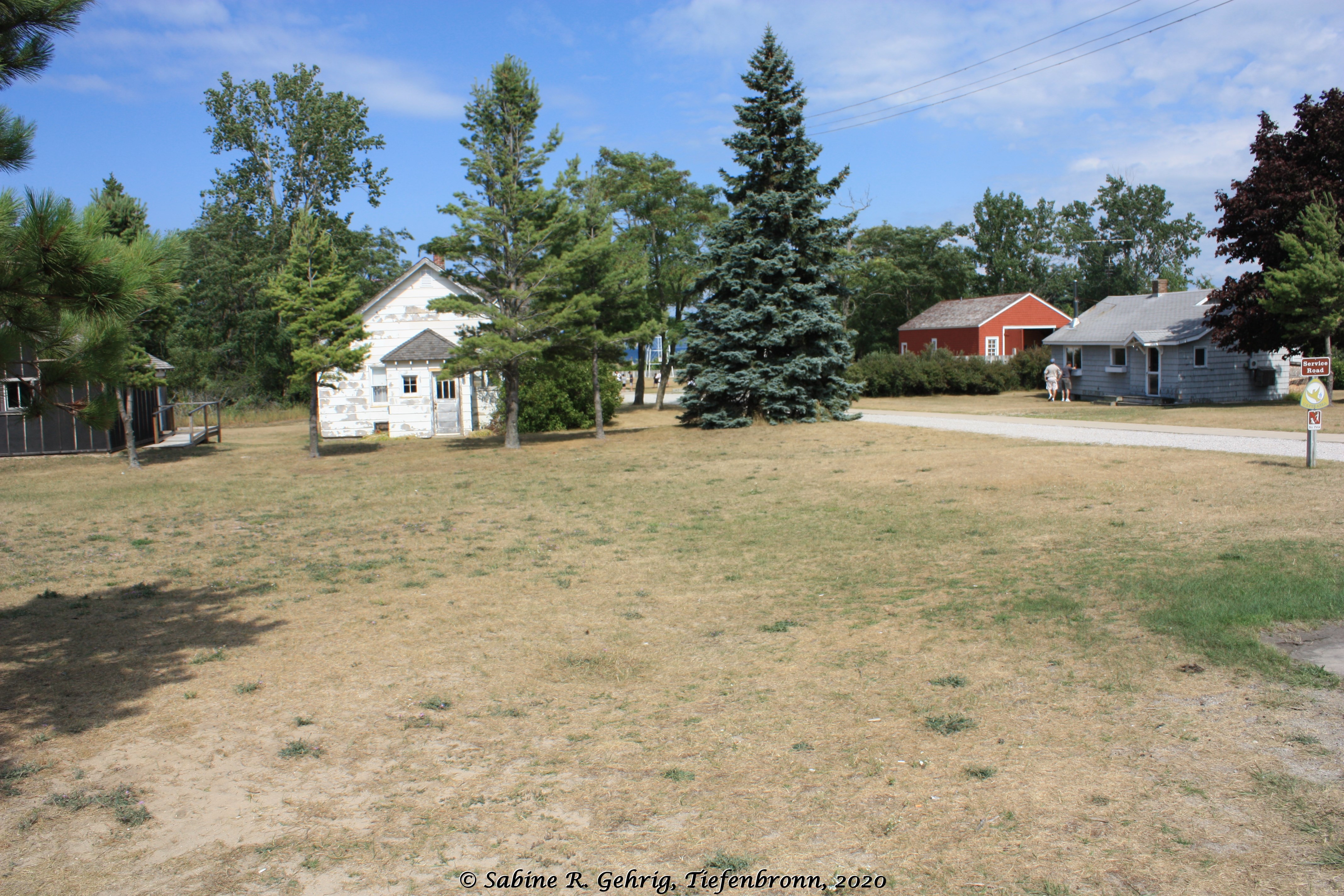
Sleeping Bear Dunes National Lakeshore, Michigan, USA (2011) – die historischen Häuser von Glen Haven, das Mitte des 19. Jahrhunderts ein Hafen war, um die Schiffe mit Holz und anderen Materialien zu versorgen; außerdem gab es eine Station der Küstenwache und Konservenfabriken / the historic houses of Glen Haven, which was a port in the middle of the 19th century to supply ships with wood and other materials; there were also a coastguard station and canneries
0 Kommentare